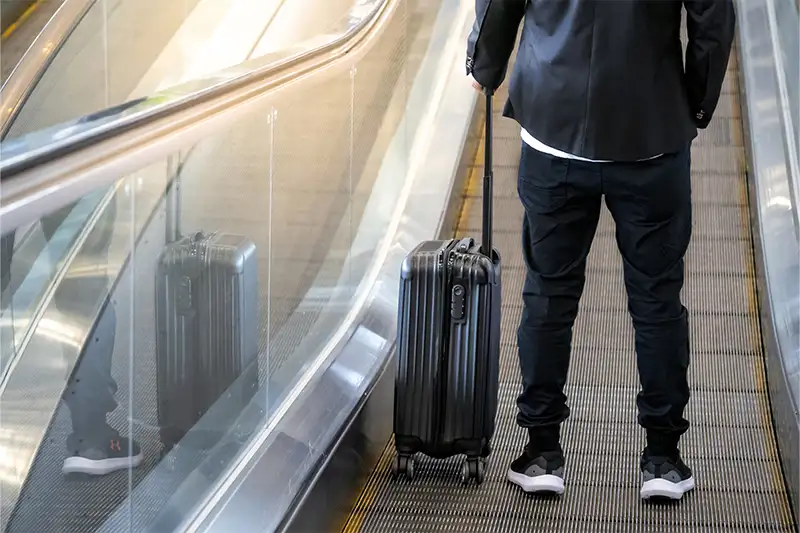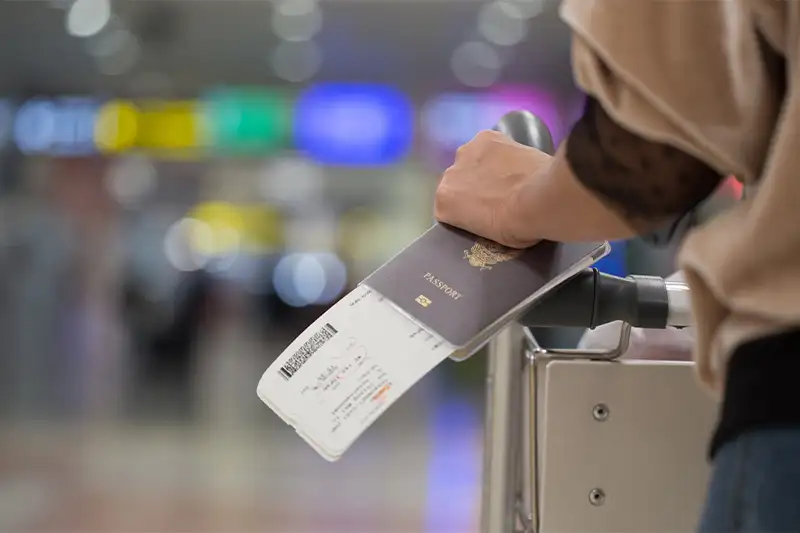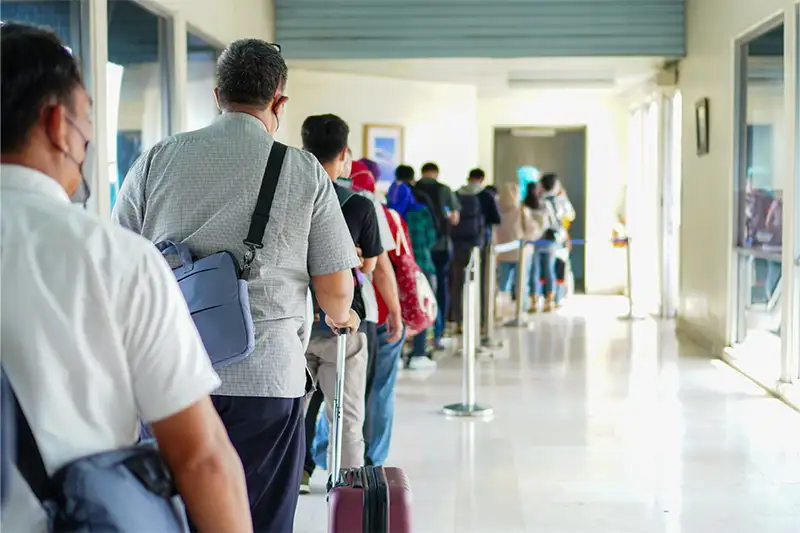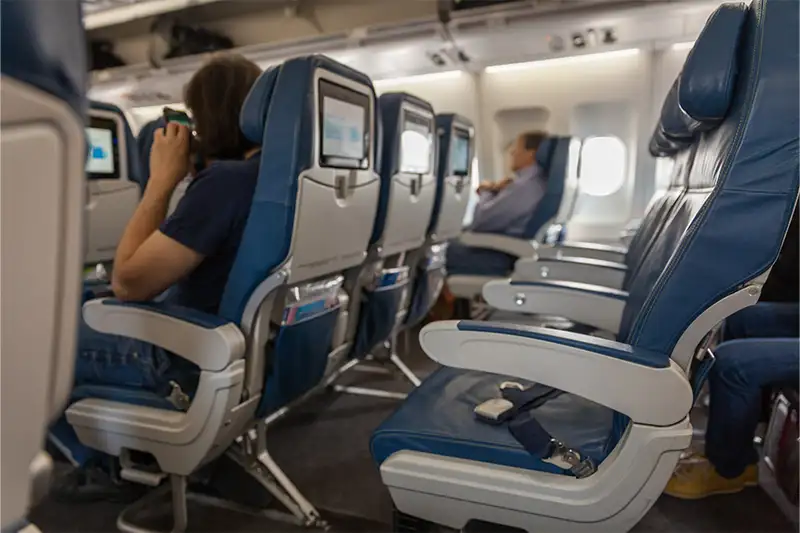Unless you’re flying is confined entirely to trips from one big airport to another, you will likely encounter the need to connect from one flight to another. The “hub and spoke” model that most big airlines practice is based on the premise that they will serve all but their busiest city-pair markets with connecting flights.
Flight connections allow one-stop service from almost anywhere to almost anywhere else, but that process also puts you at risk of missing your connection. Here’s how to protect yourself.

Know Your Airport’s Minimum Time for Connecting Flights
Each airline sets standard minimum connecting times at each hub it serves. It can be difficult to find this information on an airline’s website, but with any connecting flights you book as a single itinerary, through either an airline’s website or a travel agency, the airline’s system automatically adjusts for minimum times at your connecting point. If you miss your ongoing flight, the airline is obligated to put you on the next available flight with no additional charges.
Some of those minimum connecting times are incredibly short for a big airport, as low as 30 minutes in some cases, and usually less than 60 minutes for domestic connections. International times are usually more than an hour, and can exceed two hours at airports with separate international and domestic terminals. Some airlines add even more time for connections involving jumbo jets.
Pad Your Schedule for Airport Connections
Keep in mind that just because your airline will sell you an itinerary with a tight connection, that doesn’t mean you should buy it. Getting off a plane and walking to a distant departure gate can easily condense a 30-minute connection into almost nothing. Even if you make it in time, the experience can be stressful and leave you with no time for things like visiting the restroom or buying a meal before your next flight.
That’s why many travelers deliberately pad their schedules by booking a longer layover than the minimum at a connecting hub. Consider allowing at least 60 to 90 minutes for a U.S. domestic connection, and at least two hours for an international connection. Airlines usually allow you four hours or more maximum connecting time.
Travelers with special needs—such as those with physical disabilities or families with small children—might need even more time when getting around a large airport. You may also want to allow for a longer connection if you’re traveling at a busy time of year (such as Thanksgiving or Labor Day weekend).
Finally, consider how likely your first flight is to be delayed. Could your itinerary be affected by snow in the winter or afternoon thunderstorms in the summer? Is your first flight on the U.S. Department of Transportation’s list of chronically delayed flights? If so, build in a little extra wiggle room.
Fly on a Single Ticket
Typically, any connecting itinerary you arrange on a single ticket conforms with whatever connecting times apply. That’s true even on tickets that involve two airlines, as long as those airlines have interline agreements. The booking systems automatically incorporate requisite times. And single tickets usually provide for checking baggage through from origin to destination, including interline transfers.

Stick to One Airline or Alliance on a Flight Connection
Where possible, book connecting flights on a single airline or on airlines that are partners in an alliance. Typically, at big hub airports, airlines try to make sure that their gates and partner gates are close together. If not, they provide inside-security people-movers or shuttles to any gates they use.
Even with a valid interline ticket, however, connecting at some big hub airports involves leaving security at one terminal and re-entering at another. And, at a few airports, a single airline may use two different terminals. Airlines should build time necessary to connect through separate terminals into the itinerary.
Avoid Two-Ticket Trips When Connecting Flights
If at all possible, avoid an itinerary consisting of two separate tickets on separate airlines. Minimum connecting times apply only to itineraries on through tickets. If you’re on two separate tickets, your first flight is delayed, and you miss a connection, the second airline treats you as a no-show; it can cancel your reservation and make you buy a new ticket for its next flight. Sometimes, you can argue your way onto a later flight without penalty, but that’s not a guarantee.
If you check baggage on a two-ticket itinerary, you almost always have to check it just to the connecting point on the first airline, exit security, claim it, haul it to the second airline’s counter, re-check it, and go through security again. Obviously, you need to allow a lot of extra time for that process.
Allow lots of extra time for your flight connection whenever you’re on a two-ticket trip. I always allow at least three hours. Four is even better.
Avoid the Last Flight Connection of the Day
One of the world’s oldest travel tips remains as valid as when it was first pronounced, probably more than 60 years ago: Avoid booking the last flight of the day out of your connecting airport. The reason is obvious. Yes, the airline has to put you on its next flight, but if your original connecting flight is the last of the day, the next flight will obviously require an overnight stay at the connecting hub and arrival a day late.
A corollary, based on the same principle, is to book a connection as early in the day as is practical. The more “next available” flights, the better your chance of arriving on the day you planned.

Pick the Right Hub for Your Flight Connection
Often you have a choice of hubs, and you can avoid some white-knuckle hours by avoiding the hubs that are most prone to delays. According to current data, the worst big U.S. hubs for delays are the three New York-area airports, Chicago O’Hare, San Francisco, and Boston Logan. The sunbelt hubs generally do better.
Unless you’re on a single airline, avoid U.S. hub airports with separate terminals that lack inside-security or “airside” people movers. The worst airports for this are Dallas Fort Worth, Chicago O’Hare, Los Angeles, and New York JFK.
In Europe, London Heathrow crops up on almost everyone’s “avoid if at all possible” hub airport lists, along with Paris de Gaulle and Frankfurt. Travelers generally prefer Amsterdam (Sky Team) and Munich (Star Alliance), along with such secondary hubs as Brussels, Copenhagen, Helsinki, Madrid, Rome, and Zurich.
Have a Baggage Plan for Your Connecting Flight
There is no one-size-fits-all “right” way to deal with baggage on connecting flights. Checked baggage can miss a tight connection or even go astray for a few days, but dragging a carry-on bag from one end of a huge terminal to another, even a carry-on bag with wheels, can slow you down and tire you. Decide for yourself which approach fits you better.
Sit Near the Front of the Plane
If you know you have a tight airport connection, try to get a seat toward the front of the cabin on your first flight. Even if you have to pay, being near the exit door can shave 5 to 10 minutes off your deplaning time—especially on larger planes.

Use Apps to Make Your Flight Connection
Download one or more apps that can help you with the airport connection process by tracking delays and posting up-to-date information on departure gates. WeatherBug (iOS | Android) will help you check the weather at your connecting hub, and FlightStats (iOS | Android) will keep you abreast of delays and flight status. If you’re worried you might have to spend the night at a connecting airport, HotelTonight (iOS | Android) could help you locate a bed. You’ll probably also want your airline’s app, too.
Direct Flights Are Still the Best Option
A nonstop or direct flight is still the best way to avoid connection problems. Figure that a connecting itinerary adds a minimum of two hours to your total trip time, and more likely three, so driving up to 200 miles to/from a different airport to catch a nonstop is often a good idea. As has been noted many times, the best way to deal with O’Hare is at 30,000 feet above it.
Editor’s note: This story was originally published in 2015. It has been updated to reflect the most current information. All of the products featured in this story were hand-selected by our travel editors. Some of the links featured in this story are affiliate links, and SmarterTravel may collect a commission (at no cost to you) if you shop through them. As an Amazon Associate, we earn from qualifying purchases.
You Might Also Like:
• Luggage Locks: Should I Lock My Suitcase When I Fly?• Should You Book a Trip on Travel Tuesday?
• 7 Air Travel Secrets You Didn’t Know
• 18 Winter Travel Tips for Flights and Road Trips
• 11 Glass-Walled Cabins You Can Rent in the U.S.
We hand-pick everything we recommend and select items through testing and reviews. Some products are sent to us free of charge with no incentive to offer a favorable review. We offer our unbiased opinions and do not accept compensation to review products. All items are in stock and prices are accurate at the time of publication. If you buy something through our links, we may earn a commission.
Related
Top Fares From
Today's Top Travel Deals
Brought to you by ShermansTravel
Kenya: 14-Night Tour, Incl. Tanzania &...
smarTours
 vacation
$7125+
vacation
$7125+
7-Night Caribbean Round-Trip Cruise From Orlando:...
Norwegian Cruise Line
 cruise
$739+
cruise
$739+
Ohio: Daily Car Rentals from Cincinnati
85OFF.com
 Car Rental
$19+
Car Rental
$19+




